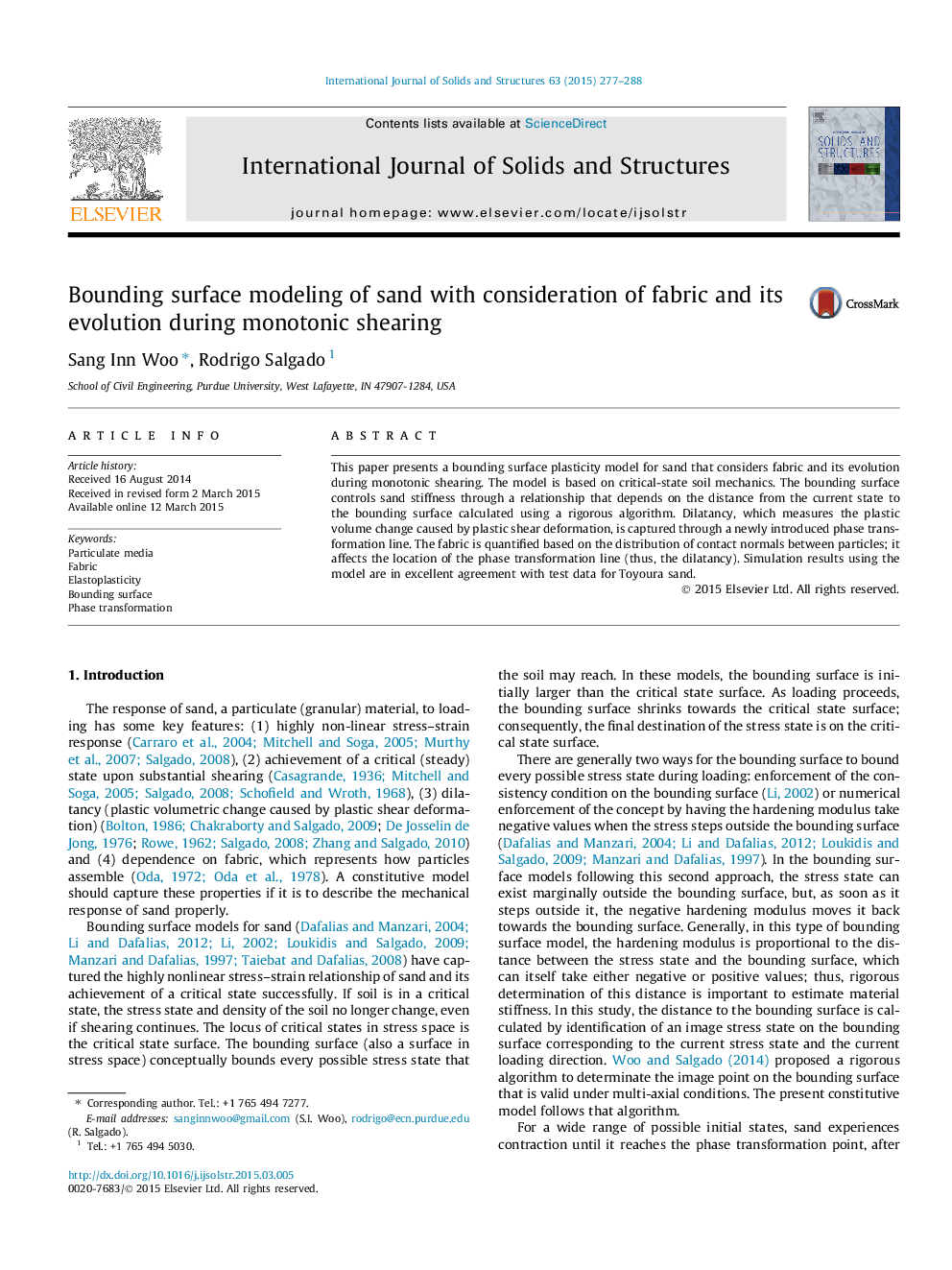| Article ID | Journal | Published Year | Pages | File Type |
|---|---|---|---|---|
| 277353 | International Journal of Solids and Structures | 2015 | 12 Pages |
•We propose a constitutive model for sand loaded statically and monotonically.•A key model feature is a phase transformation line to describe the dilatancy response.•Fabric influences the phase transformation line (PTL), thereby affecting dilatancy.•As fabric evolves, the PTL evolves to a critical state line that is unique.•Simulations of the model agree very well with wide-ranging experimental data.
This paper presents a bounding surface plasticity model for sand that considers fabric and its evolution during monotonic shearing. The model is based on critical-state soil mechanics. The bounding surface controls sand stiffness through a relationship that depends on the distance from the current state to the bounding surface calculated using a rigorous algorithm. Dilatancy, which measures the plastic volume change caused by plastic shear deformation, is captured through a newly introduced phase transformation line. The fabric is quantified based on the distribution of contact normals between particles; it affects the location of the phase transformation line (thus, the dilatancy). Simulation results using the model are in excellent agreement with test data for Toyoura sand.
